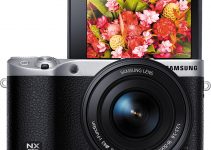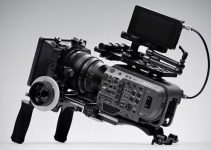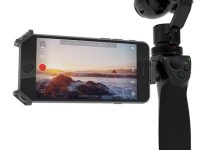The simple answer is “Yes, they are!”
Even though, there are a lot of discussions, comments, and controversy on this topic. Ever since the beginning of the so-called “DSLR revolution” back in 2008 many filmmakers claimed that the lower resolution, the poor quality of the H.264 codec and the other technical imperfections such as the undesired artefacts like moire and aliasing, combined with the limited 8-bit 4-2-0 colour subsampling of the cameras like Canon 550D, 5D Mark II, 7D are among the most popular arguments against shooting a movie for the big screen with a DSLR.
Fast-forward to 2014, and enter the Canon C300, 5D Mark III, BMCC, BMPCC, Red Scarlet and many other digital cameras on the market, making the argument a bit pointless and obsolete.
Nevertheless, there are still a lot of reasons why you should use your old Canon 5D Mark II or a 7D for your low-budget feature film.
- Cost Factor – Nowadays, a DSLR like a 5D MKII or 7D could be bought at a substantially low cost.
- Large Sensor – The sensors in those cameras are much larger than the ones being used on the BMCC, BMPCC and the Panasonic GH4.
- Great Lowlight Capabilities – the larger sensors allow for an increase in sensitivity
- Compact and Lightweight – The form factor is still unbeatable.
- Interchangeable Lenses – Diversity in this segment is obvious and gives you a lot of options to choose from – EF, F-mount (Nikon), Micro Four-Thirds etc.
- Cost Effective Codec – One minute of HD footage on a cheap Compact Flash (CF) card in your 7D is around 360MB, which is significantly smaller compared to the 1.3GB ProRes HQ file in the same resolution. You don’t even need to transcode the material anymore. Presently, Adobe Premiere CC and many other NLE’s give you the option to edit the H.264 material natively.
- Reliability – Those DSLRs are trusted “workhorse” cameras. They simply do the job.
- Diversity of Accessories – There are a lot of them on the market.
- Online Resources – Everything you need to know about the first generation of DSLRs is on the Internet already. There are a plenty of free resources out there.
- They are great on the big screen – The last, but not at least, that’s the most important argument for me.
From personal experience and point of view, I can confirm that the picture quality those cameras can produce is more than enough for the big screen. Sure, there are limitations, the codec is poor, there is not much room for diversity of color correction decisions in post-production. However, if you set your white balance properly and you expose correctly there is nothing you should worry about.
Furthermore, now it is even possible to produce a top-notch quality DCP (Digital Cinema Package) Master for FREE. All you need is a ProRes HQ Export File from your NLE and the software called OpenDCP. It’s available for all PC, Mac and Linux users. You can download the latest version here.
Also, we have a great step-by-step tutorial presented by the independent UK based director and cinematographer Danny Lacey:
Whether you choose to shoot and deliver your project in 2K or 4K, the technology you will need is already here. There are no boundaries anymore. So, be creative, use your imagination and start shooting!
Disclaimer: As an Amazon Associate partner and participant in B&H and Adorama Affiliate programmes, we earn a small comission from each purchase made through the affiliate links listed above at no additional cost to you.




